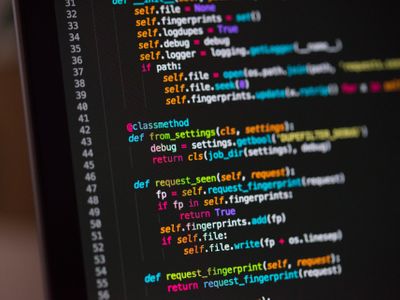- Principles of object-oriented programming: encapsulation, abstract data types, interfaces, high cohesion, and low coupling
- Classes and objects, relations between objects and classes, inheritance, and interface, polymorphism
- Introduction to implementation of abstract data types and object-oriented design patterns
- Generics
- Syntax and implementation in an object-oriented language
- Excptions and exception handling
- Streams for reading from, and writing to, other devices, such as files and applications
- Thread programming
- Garphical user interfaces and event handling
- Functional programming in object-oriented languages: functional interfaces, streams, lambda expressions
HI1027 Object Oriented Programming 8.0 credits

Information per course offering
Choose semester and course offering to see current information and more about the course, such as course syllabus, study period, and application information.
Information for Spring 2026 Start 13 Jan 2026 programme students
- Course location
KTH Flemingsberg
- Duration
- 13 Jan 2026 - 13 Mar 2026
- Periods
Spring 2026: P3 (8 hp)
- Pace of study
67%
- Application code
60540
- Form of study
Normal Daytime
- Language of instruction
Swedish
- Course memo
- Number of places
Places are not limited
- Target group
- No information inserted
- Planned modular schedule
- [object Object]
- Schedule
Contact
Course syllabus as PDF
Please note: all information from the Course syllabus is available on this page in an accessible format.
Course syllabus HI1027 (Autumn 2024–)Content and learning outcomes
Course contents
Intended learning outcomes
The course will give students the basics of object-oriented thinking in programming as well as good knowledge of syntax and programming techniques in an object-oriented language.
For a passing grade, students must:
1. Describe object-oriented principles such as encapsulation, abstract data types, interfaces, inheritance, high cohesion, and low coupling
2. Based on a straightforward problem description, develop an object-oriented model for implementation, with classes, members, methods, and relationships, that follow object-oriented principles
3. Describe some common object-oriented design patterns
For a passing grade, the student must also, in specific object-oriented language, be able to:
4. Implement classes, and objects, following object-oriented principles such as encapsulation, distinct interfaces, inheritance, high cohesion, and low connectivity
5. Implement common data types such as list, queue, and stack as well as some common design patterns
6. Use exceptions to signal errors and handle them at an appropriate level in the application
7. Implement multi-threaded applications and protect shared data from synchronization issues
8. Write applications with graphical interfaces and event handling
Literature and preparations
Specific prerequisites
HI1024 Computer Programming, Basic Course, or corresponding course
Literature
Examination and completion
Grading scale
Examination
- TEN1 - Written examination, 3.5 credits, grading scale: A, B, C, D, E, FX, F
- LAB1 - Mandatory laboratories, 4.5 credits, grading scale: P, F
Based on recommendation from KTH’s coordinator for disabilities, the examiner will decide how to adapt an examination for students with documented disability.
The examiner may apply another examination format when re-examining individual students.
If the course is discontinued, students may request to be examined during the following two academic years.
Written exam, TEN1, 3.5 credits (ECTS) A-F. The exam contains both theoretical and practical portions.
Lab assignments, LAB1, 4.5 credits (ECTS) A-F.
The final grade is based on all parts of the examination.
Examiner
Ethical approach
- All members of a group are responsible for the group's work.
- In any assessment, every student shall honestly disclose any help received and sources used.
- In an oral assessment, every student shall be able to present and answer questions about the entire assignment and solution.